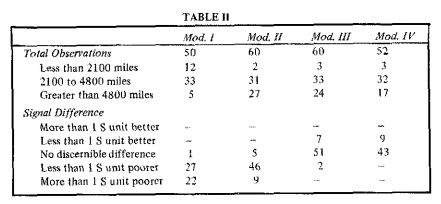Ever since the Loop antennas came out, the controversy that has most characterized the debate over which antenna is superior has focused on the comparison of the two systems' higher forward gain.
Even though the Loop antennas, as fully shown, have a significantly higher gain compared to the homologous Yagi-Uda models, there are other features that make the Loop antennas interesting and sometimes preferable.
Here are some noteworthy features.
Gain
Usually a Loop antenna exhibits a higher gain than a Yagi antenna with the same number of elements (see W. Orr W6SAI and S. Cowan W2LX)
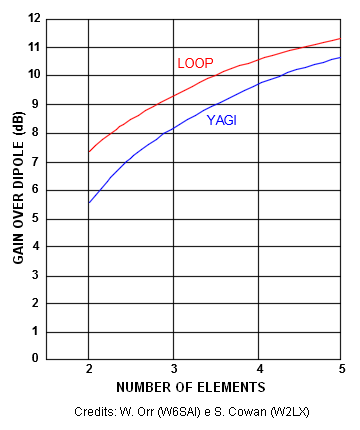
Taken from the ARRL Antenna Book (ed. 21), what follows is an interesting diagram which compares two 5-element/21 MHz having the same boom length (abt. 8,5 m.) and a 3 el. Loop with a 4 el Yagi on 20 m.
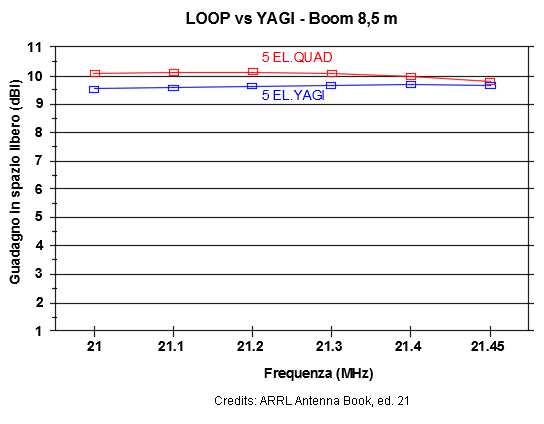 | 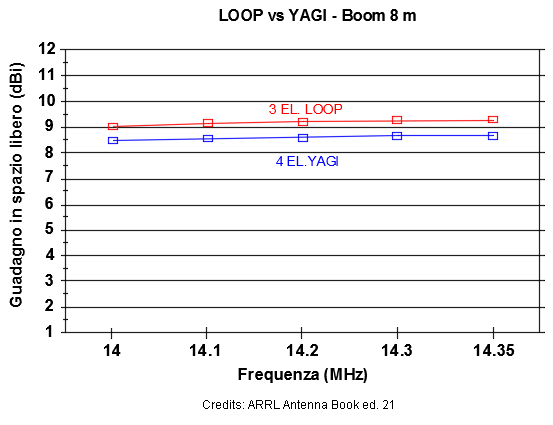 |
As can be seen, the Loop antenna's forward gain stays higher than Yagi-Uda one along the whole band.
However, there are no records of a Yagi sysyem's forward gain exceeding the homologous array Loop even in conditions of a smaller gap between Loop and Yagi.
Take Off vs. Height from the ground
A Delta Loop and a Yagi antenna, placed at the same height from the ground, show a very different take off angle (elevation of the main lobe's signal).
The smaller is the take off angle, the bigger is the distance of the bouncing RF signal transmitted by the antenna, the better are the chances to make connections at an impressive distance.
The following diagrams show the typical take off difference of a Yagi-Uda and a Delta Loop system.
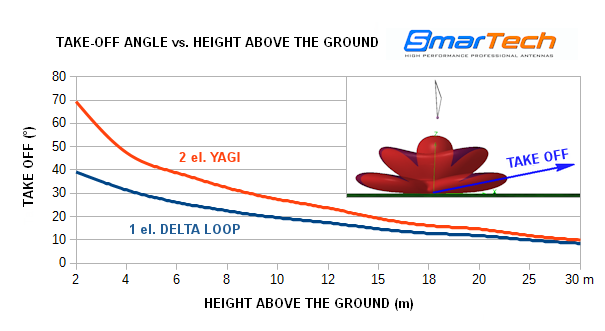 | 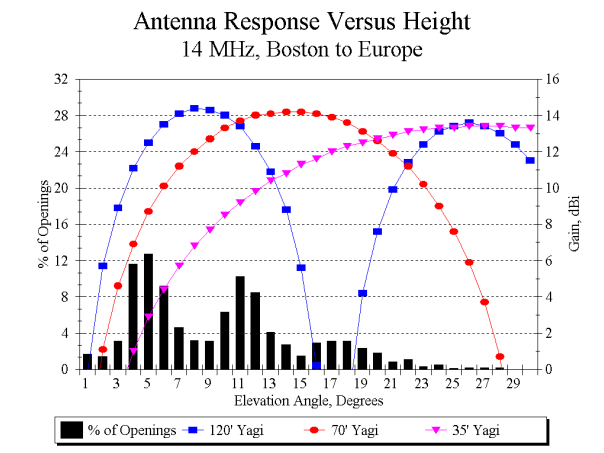 |
Note that at 6 metres from the ground a difference of as many as 8° in favour of the Delta Loop is found.
By using both diagrams it is possible to better analyse the importance of the elevation angle from the ground.
Horizontal/vertical beamwidth @ -3dB
By comparing the typical beam solid angles of a Yagi and Delta Loop system with the same forward gain, you can notice that the -3dB beamwidth of a Delta Loop is basically wider than that of a Yagi-Uda.

This is a precious feature both in the regular long-distance connections and in competitions (ex. Contests).
Practical comparisons
The summary of the features that make an antenna more performing is shown in practise: situations in which all the intrinsic (antennas' characteristics) and extrinsic variables occur (propagation modalities, site morphological characteristics, etc.), which are typical of all installations.
Here are some interesting studies carried out by practically testing (and at the same time) compared antennas.
Ham radio Magazine – September 1978
Glenn William (N2GW) makes a 2 element Delta Loop 14 MHz, which he compares with a 3 element Yagi and a 2 element Quad
Here are his conclusions:
ConclusionThe 2-element delta loop has been a real performer for me. It’s allowed me to compete in several DX pileups and comparefavorably with others using full-size3-element Yagis and 2-element quads. Even after my linear was recently sidelined, I was still able to work out very nicely just using my exciter. Also, the low vswr allowed me to bypass my antenna tuner and still enjoy a vswr of less than 1.5:1 across the entire band.
QST – October 1966
Robert Fitz (W4RBZ) compares the two systems installed on two 25 metre tall towers, taking notes of the received signals.
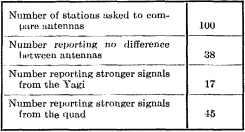
The results represented in the chart show that in the 73% of the cases the Loop had the same or better performances then the compared Yagi.
QST – February 1971
John Parrot Jr. (W4GRU) compares 4 different Loop models with a 3 element Yagi.
His conclusions:
The antenna tests indicate that:1) One can expect to achieve the same or better results with a two-element quad of proper dimensions than with a three or four element triband Yagi.2) A wide-spaced quad will perform substantially better than a close-spaced quad.3) Dollar for dollar, the quad appears to be a better investment than a Yagi.
...It is intersting to observe that openings to the U.S. lasted 15 to 30 minutes longer on each end of the period than with the Yagi.

